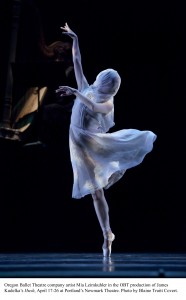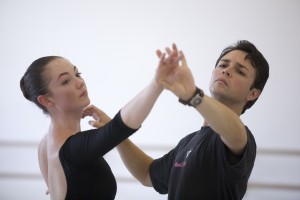 The bad doo-doo has just hit the fan. Art Scatter’s Barry Johnson, on his alternate-universe blog Portland Arts Watch, has just reported that Oregon Ballet Theatre has its back against the wall. It needs $750,000, and it needs it fast — by June 30 — or it could fold up shop and simply disappear.
The bad doo-doo has just hit the fan. Art Scatter’s Barry Johnson, on his alternate-universe blog Portland Arts Watch, has just reported that Oregon Ballet Theatre has its back against the wall. It needs $750,000, and it needs it fast — by June 30 — or it could fold up shop and simply disappear.
Make no mistake: That would be a catastrophe. No doubt the sneerers will be out in full force, snickering about how the marketplace has spoken and it just doesn’t care about twinkle-toed terpsichores trouncing around in tutus. I’m sorry, but Just. Shut. Up. Even if ballet leaves you cold, if you care about Portland and believe it has both the right and responsibility to be a full-fledged city, this is important stuff.
The fact is, we are in the middle of an economic disaster — I just learned this afternoon of yet another friend who’s lost her job — and it is taking down both people and organizations with no respect for their talents or worth. “The marketplace” has failed the nation. Right now, it’s a lousy measuring stick for anything.
Why is it essential that Portlanders keep Oregon Ballet Theatre alive? For a lot of reasons, one of which is that this is the city’s most gifted performing ensemble — or at least right up at the top, along with the Oregon Symphony, Portland Baroque Orchestra and Third Angle New Music Ensemble — and a beacon, in every show, for the heights that any group, artistic or not, should strive to achieve. It is our target, our model, our proclamation that we can stand shoulder to shoulder with the best.
Under artistic director Christopher Stowell OBT has achieved a solid historical grounding, a mastery of technique and an exciting artistic personality. The best part is, it’s still growing, and promises to achieve much more if only given the chance. No financial crisis should put a stop to that.
It’s simply unthinkable that dancers with such zest and style as Alison Roper, Artur Sultanov, Anne Mueller, Gavin Larsen, Yuka Iino, Kathi Martuza and Ronnie Underwood should suddenly find themselves out on the street, unemployed and unappreciated. All of them, and their fellow dancers, have created something special, and it is Portland’s duty to help them when they need help the most.
As Barry points out, the ballet world has taken notice. People in the know, know that this is a company on the rise, and a company of increasing national importance. So on June 12 — shortly after OBT’s season-ending program of works by Jerome Robbins and Christopher Wheeldon — dancers from the New York City Ballet, Boston Ballet, San Francisco Ballet, the Trey McIntyre Project and elsewhere will be in town for a giant gala benefit performance that promises to be a true bell-ringer. Buy tickets to Robbins and Wheeldon. Buy tickets to the gala.
And if you’re able, write a check. OBT is too important to fail.



